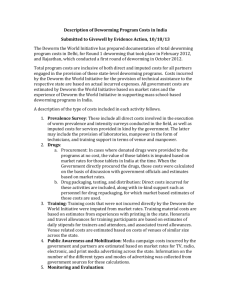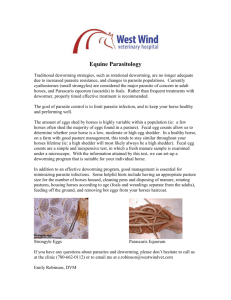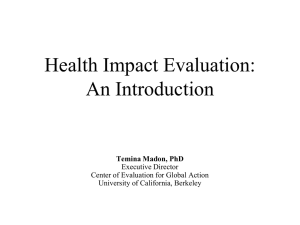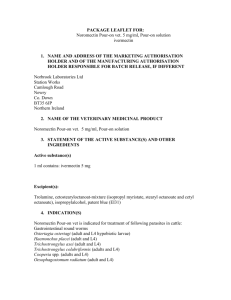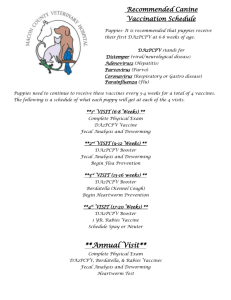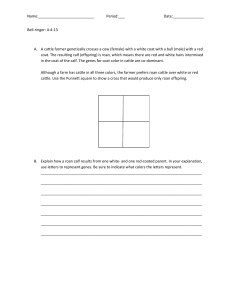Veterinarian Perspective On Strategic Deworming … Injectable
advertisement
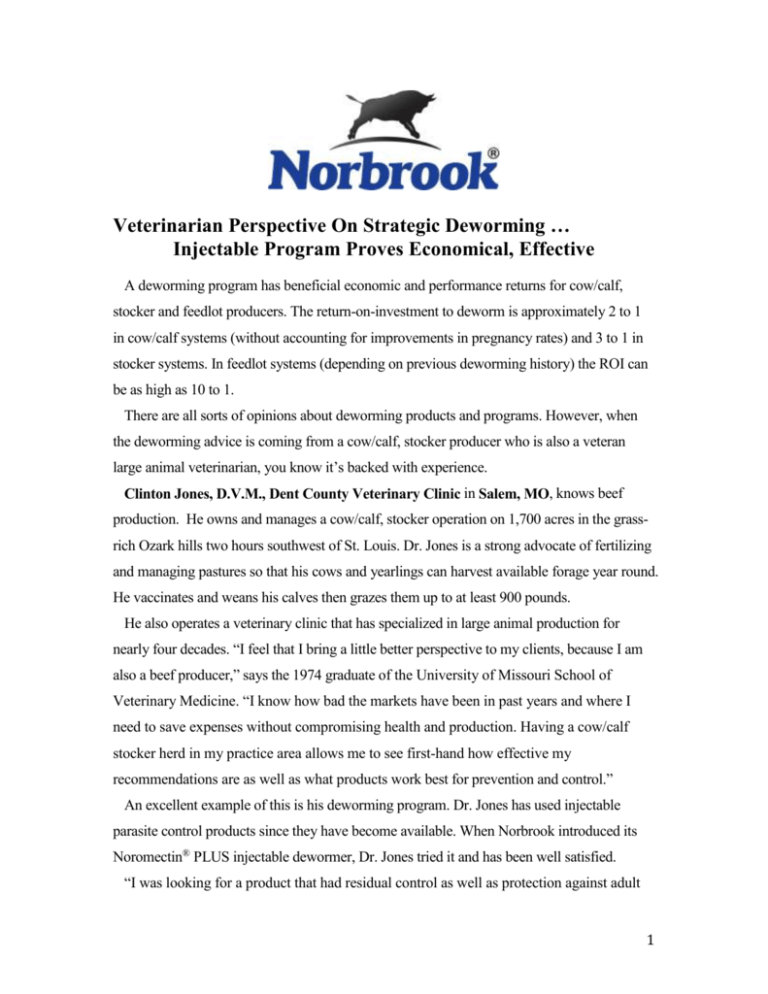
Veterinarian Perspective On Strategic Deworming … Injectable Program Proves Economical, Effective A deworming program has beneficial economic and performance returns for cow/calf, stocker and feedlot producers. The return-on-investment to deworm is approximately 2 to 1 in cow/calf systems (without accounting for improvements in pregnancy rates) and 3 to 1 in stocker systems. In feedlot systems (depending on previous deworming history) the ROI can be as high as 10 to 1. There are all sorts of opinions about deworming products and programs. However, when the deworming advice is coming from a cow/calf, stocker producer who is also a veteran large animal veterinarian, you know it’s backed with experience. Clinton Jones, D.V.M., Dent County Veterinary Clinic in Salem, MO, knows beef production. He owns and manages a cow/calf, stocker operation on 1,700 acres in the grassrich Ozark hills two hours southwest of St. Louis. Dr. Jones is a strong advocate of fertilizing and managing pastures so that his cows and yearlings can harvest available forage year round. He vaccinates and weans his calves then grazes them up to at least 900 pounds. He also operates a veterinary clinic that has specialized in large animal production for nearly four decades. “I feel that I bring a little better perspective to my clients, because I am also a beef producer,” says the 1974 graduate of the University of Missouri School of Veterinary Medicine. “I know how bad the markets have been in past years and where I need to save expenses without compromising health and production. Having a cow/calf stocker herd in my practice area allows me to see first-hand how effective my recommendations are as well as what products work best for prevention and control.” An excellent example of this is his deworming program. Dr. Jones has used injectable parasite control products since they have become available. When Norbrook introduced its Noromectin® PLUS injectable dewormer, Dr. Jones tried it and has been well satisfied. “I was looking for a product that had residual control as well as protection against adult 1 liver flukes that we see coming in from southeastern cattle,” he notes. “And because of the economical price of the injectable product, even if flukes were not a concern, you can’t control internal parasites any better or cheaper than with this injectable.” They have a lot of intensely grazed pastures, which means higher parasite egg counts and cattle exposure. In these situations Dr. Jones prefers the injectable deworming route so he can treat and prevent internal and external parasites more effectively. A lot of producers who are practicing intense grazing (moving cattle every few days), are starting to see their cattle not slick off as well, persistent dirty tails and internal parasite control issues when using only pour-on products. “In those types of situations,” Dr. Jones notes, “we are trying to get producers to use Noromectin® PLUS and rotate to other active ingredient pour-on products if needed. Some producers may think they’re saving a lot of money buying the less expensive pour-on products, and some are, but in the intensely grazed programs where they have to treat four to five times a year, pour-ons are not doing a thorough job on internal parasites. Producers are seeing ineffective control and experiencing reduced animal performance,” he states. Dr. Jones also points out Noromectin PLUS injectable is priced right for the producer, which allows him to recommend (and practice himself) a twice-a-year program for internal and external parasite control. “It’s difficult to find a parasiticide product that will last from November to April, but the injectable does a great job and provides good coverage. It’s a solid economical investment for cattle operations,” he concludes. Controlling Worms in Feedlots Critical Zach Smith, D.V.M., Dimmitt Veterinary Clinic, Dimmitt, TX, strongly recommends strategically deworming all incoming cattle into his practice area. He says it is not as much a management decision as it is a necessity for improving overall health and performance as well as maximizing nutrient utilization and weight gains. Dr. Smith practices in the feedlot-intense region of the Texas Panhandle where beef is king and internal parasites can significantly limit performance. Routinely the animals being trucked into these yards are coming from all over the southeast and east Texas regions. “We just assume (and fecal egg counts confirm) that these calves have a large worm burden,” Dr. Smith states. “We immediately deworm all 2 arriving animals with a good deworming product that usually controls both internal and external parasite loads. If the animals are coming from the southeast, we will more than likely choose a product like Noromectin PLUS because it will cost-effectively kill our problematic intestinal parasites like brown stomach worms and lungworms, but it also kills adult liver flukes – something we see from cattle coming from this region.” Stocker cattle brought in to feed off the lush winter wheat acres around Dimmitt are also at risk for parasite damage. “Much like the feedyard receiving programs, our stocker operators deworm with either a pour-on or injectable dewormer when animals arrive. Most will make sure (whether they retain ownership or sell to the yard outright) cattle are dewormed again in six months when they leave the wheat fields,” Dr. Smith adds. In most cases producers make the determination of which wormer to use. “Some will use the pour-on where others want more broad-spectrum internal parasite control and will select the injectable,” Dr. Smith notes. “I have no problem suggesting a generic pour-on or injectable deworming product to keep operating costs down,” the Texas A&M veterinarian states. “I specifically recommend Norbrook’s Noromectin line of products because I have never seen any quality issues where I have used them.” 3
